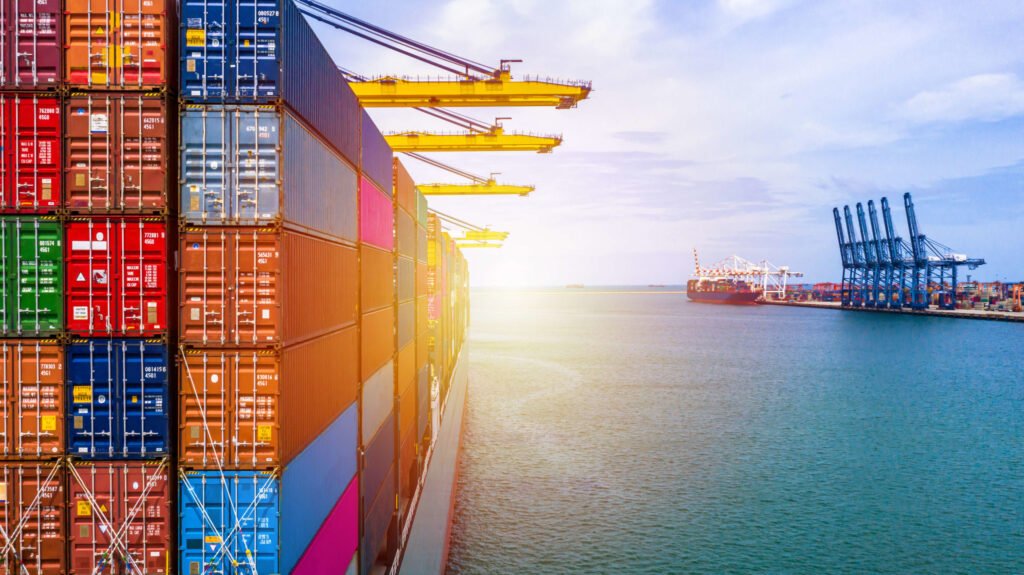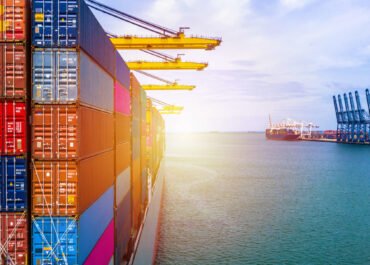
Strategies for Thriving Amidst Global Disruptions
In today's interconnected and rapidly evolving global marketplace, the need for a resilient supply chain management has never been more critical.
Building Resilient Supply Chains:
What is Supply Chain Resilience?
Supply Chain Resilience refers to the robust capability of a supply chain to withstand and adapt to disruptions, ensuring continuous and reliable delivery of goods and services. From natural disasters and geopolitical tensions to technological disruptions and pandemics, the array of potential challenges is vast and unpredictable. Amidst all these unexpected and spontaneous events that might happen, businesses that prioritize supply chain resilience not only safeguard their operations against these risks but also position themselves for long-term success and sustainability. By the best utilization of advanced technologies, fostering strategic partnerships, and embedding flexibility and agility into their core operations, organizations can transform potential vulnerabilities into opportunities for innovation and growth. In essence, supply chain resilience is not just about survival in the face of adversity—it's about thriving in an uncertain world.
What are the Key Elements of Supply Chain Resilience?

What Makes Supply Chain Resilience Significant?
Over the past two decades, the supply chain management have been witnessing a significant increase in the complexities due to the expansion of globalization. Supply Chain Resilience is of paramount importance in the contemporary business landscape for several compelling reasons. Let us explore some of the key benefits of implementing resilient supply chain management within an organization.
-
Continuity in Operations:
With a resilient supply chain management, organizations can ensure an undisturbed flow of operation even in the face of unexpected disruptions. These disruptions can have severe consequences, including financial losses, reputational damage, and erosion of customer trust which will be easily managed if an organization prioritizes resilience in their supply chain management.
-
Enhanced Agility and Flexibility:
The current business landscape, which is under constant evolution, often demands the need for companies to become capable of adjusting swiftly to the changing market requirements. With supply chain resilience comes an organization’s ability to adapt to changes which enhances their competitive edge and customer satisfaction.
-
Better Risk Management:
Supply chain resilience is integral to risk management due to which organizations with a resilient supply chain management becomes capable of proactively identifying and mitigating potential vulnerabilities, which in turn helps them to prevent minor issues from escalating into major crises.
-
Maintenance of High Standard Corporate Responsibility:
By fostering a resilient supply chain management, organizations become better equipped to meet legal requirements, avoid penalties, and maintain high standards of corporate responsibility. This approach not only ensures adherence to laws and regulations but also enhances the organization’s reputation and credibility in the market.
-
Foster Innovation and Continuous Improvement:
With ongoing advancements in technological integration, the concept of supply chain resilience underscores the necessity for digital transformation. Through the strategic utilization of advanced technologies and best practices, companies can optimize their supply chains, drive efficiencies, and enhance overall performance.

Five - Step Effective Approach to Creating a Resilient Supply Chain
To navigate the complex web of risks and uncertainties, organizations must forge a robust and adaptive supply chain that can face disruptions and emerge stronger in the face of adversity. This introduces the need for a strategic approach—one that blends foresight, collaboration, and technological innovation. Let us now unveil a five-step blueprint, a beacon of resilience amidst turbulent seas, that will guide organizations towards the creation of a supply chain that not only endures but thrives amidst uncertainty.
-
Step 1:
Assessment of Risks: It is essential to initiate any process with a comprehensive assessment. In supply chain management, conducting a thorough evaluation of potential risks and vulnerabilities—such as natural disasters, geopolitical instability, supplier disruptions, and demand fluctuations—enables an organization to identify factors that may pose threats to the smooth operation of its processes. This proactive approach helps organizations stay well-prepared to address and mitigate these risks effectively.
-
Step 2:
Diversification Process: Implement diversification strategies to minimize dependency on single suppliers, transportation routes, and manufacturing locations. As dependency diversifies, the likelihood of a major disruption in operations decreases, as multiple contingency plans are in place to ensure an uninterrupted flow of processes. Establish backup suppliers, maintain safety stock, and explore alternative sourcing options to ensure continuity of supply.
-
Step 3:
Effective Collaboration: Create a strong relationship and collaboration with suppliers, partners, and stakeholders. Align goals, share information, and develop contingency plans to enhance responsiveness and coordination during disruptions. This collaborative approach ensures a unified and proactive response to challenges, strengthening the overall supply chain's ability to withstand and recover from unforeseen events.
-
Step 4:
Integration of Advanced Technology: In the face of rapid technological advancements, it is imperative to integrate and capitalize on these innovations to enhance supply chain resilience. Implementing advanced technologies significantly improves visibility, agility, and decision-making within your supply chain. Leverage tools such as IoT, blockchain, predictive analytics, and cloud-based platforms to monitor operations in real-time, identify potential risks, and optimize processes. These technologies enable more informed and responsive management, ensuring a more resilient and efficient supply chain.
-
Step 5:
Continuous Improvement Measures: Foster a culture of continuous improvement and adaptation. Regularly review and update resilience strategies to reflect changing market dynamics, emerging risks, and insights gained from past disruptions. Embrace agility and flexibility to swiftly respond to evolving challenges and opportunities, ensuring the supply chain remains robust and responsive in an ever-changing environment.
How can APICS Certified Programs help Professionals to Foster a Resilient Supply Chain Management within Organizations?
APICS certifications like CSCP, CPIM, CLTD and CTSC can significantly help professionals implement resilient supply chain management within their organization by providing them with the knowledge, skills, and best practices necessary to build and maintain robust supply chains.
Here are several ways in which APICS certifications can contribute to this goal:
- Enables professionals to identify and address potential vulnerabilities in the supply chain, minimizing the impact of disruptions.
- Emphasizes strategic planning and execution where professionals learn how to align supply chain strategies with organizational goals, ensuring that resilience is integrated into the overall business strategy.
- APICS courses cover the use of advanced technologies such as IoT, blockchain, and predictive analytics through which professionals become capable of enhancing supply chain visibility, improving decision-making, and optimizing processes to ensure resilience.
- Provide access to a network of supply chain professionals and industry experts which offer opportunities for knowledge sharing, collaboration, and staying updated on the latest trends and challenges in supply chain management.
The CXO Roundtable, organized by Blue Ocean Corporation and featuring industry experts and C-Suite executives from diverse industries, discussed the need for embracing resilient supply chains and adopting sustainable practices to ensure operational excellence.
Also Read:
why apics certification
which apics certification is best
how to get apics certification
is apics certification worth it
Why Provide Training for Supply Chain Professionals?
For more Details contact us:
Continuity in Operations:
Enhanced Agility and Flexibility:
Better Risk Management:
Maintenance of High Standard Corporate Responsibility:
Foster Innovation and Continuous Improvement:
Step 1:
Step 2:
Step 3:
Step 4:
Step 5:
Facebook
Twitter
LinkedIn
WhatsApp
Email
Strategies for Thriving Amidst Global Disruptions
In today’s interconnected and rapidly evolving global marketplace, the need for a resilient supply chain management has never been more…



